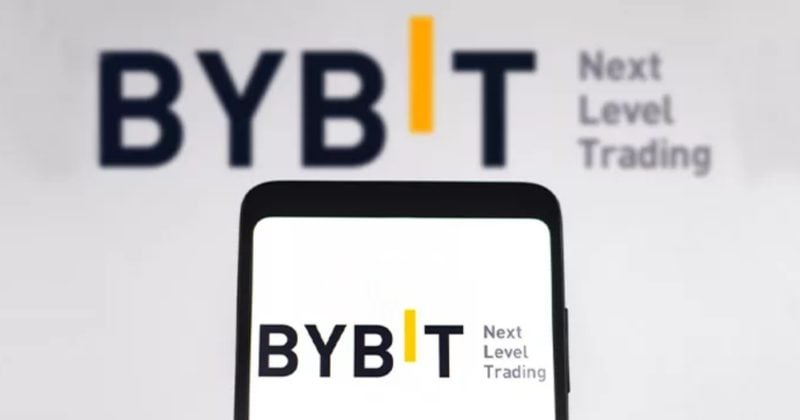Smart contracts, the cornerstone of decentralized applications (DApps), have revolutionized the way we transact on the blockchain. However, with innovation comes the risk of exploitation, and one such threat that has gained prominence is the front-running attack. In this blog post, we’ll explore what front running is, how it impacts smart contracts, and strategies to fortify your transactions against this malicious practice.
Understanding Front Running:
Front running is a form of market manipulation where an individual or entity exploits advanced knowledge of impending transactions to gain an unfair advantage. In the context of smart contracts, front running occurs when an attacker anticipates and exploits the execution of a transaction before it is included in a block. This can result in the attacker profiting at the expense of the original transaction sender.
Mechanics of a Front Running Attack:
- Observation: Attackers monitor pending transactions in the mempool, the pool of unconfirmed transactions awaiting inclusion in a block.
- Anticipation: The attacker identifies a desirable transaction, often involving buying or selling assets, and quickly prepares a transaction to be executed before the original one.
- Execution: The attacker’s transaction, with a higher gas price, is mined before the original transaction, altering the intended outcome and potentially leading to financial losses for the victim.
Impact on Smart Contracts:
Front running attacks pose significant risks to various decentralized applications and smart contracts. Some common scenarios include:
- Decentralized Exchanges (DEXs): Front runners can exploit price changes by placing orders ahead of others, leading to skewed market prices and unfavorable trading conditions.
- Auction-style Bidding: In scenarios where participants submit bids or transactions within a limited timeframe, front runners can manipulate the outcome by placing their bids strategically.
- Token Sales and Initial Coin Offerings (ICOs): Front runners can take advantage of token sales, grabbing a significant portion of tokens at a favorable price before others can participate.
Mitigating Front Running Attacks:
To safeguard your smart contracts against front running attacks, consider implementing the following strategies:
- Use Commit-Reveal Schemes: Implement Commit-Reveal Schemes to hide sensitive information until a later reveal phase. This prevents front runners from predicting and exploiting transaction details. Participants commit to their transactions, making it difficult for attackers to anticipate the exact details.
- Cryptographic Commitments: Leverage cryptographic commitments, such as hash functions, to create secure and tamper-proof commitments. The use of cryptographic functions adds a layer of complexity, making it challenging for front runners to reverse engineer committed values.
- Decentralized Oracle Services: Utilize decentralized Oracle networks to obtain real-world information securely. By relying on multiple oracles, you reduce the risk of a single point of failure or manipulation, making it more difficult for front runners to exploit information feeds.
- Gas Auction Mechanisms: Implement gas auction mechanisms to dynamically adjust gas prices based on demand. This can make it economically unfeasible for front runners to consistently exploit transactions, as they would need to outbid other participants significantly.
- Randomization Techniques: Introduce randomization elements in smart contract logic to make it harder for front runners to predict transaction outcomes. This can include random delays in execution or randomized order placements.
- Smart Contract Access Controls: Implement proper access controls to restrict sensitive functions to authorized users. Ensure that critical functions are only accessible by users with the necessary permissions, reducing the risk of unauthorized front-running.
- Optimized Gas Usage: Optimize gas usage in your smart contracts to make front-running attacks less economically attractive. By minimizing the gas cost of transactions, you reduce the potential gains for front runners.
- Time-Dependent Actions: Introduce time-dependent actions that make it challenging for front runners to predict the exact timing of transactions. This can include random delays or using block timestamps in a secure manner.
- Zero-Knowledge Proofs: Explore the use of zero-knowledge proofs to enhance privacy and security. Zero-knowledge proofs allow a party to prove the authenticity of information without revealing the actual details. This can be applied to conceal transaction details from potential front runners.
Understanding Commit-Reveal Schemes:
A Commit-Reveal Scheme is a cryptographic technique designed to conceal sensitive information during a commitment phase and later reveal it in a secure manner. This approach ensures that critical details of a transaction, such as the amount, price, or any other confidential data, remain hidden until a predetermined time when participants disclose the committed information.
The Two Phases of Commit-Reveal Schemes:
Commit Phase:
- In the commit phase, participants generate a commitment, typically through a cryptographic hash function, concealing the actual information.The commitment is then publicly broadcasted or stored on the blockchain, allowing participants to verify the commitment’s existence.
Reveal Phase:
- After a predefined time or trigger event, participants enter the reveal phase, where they disclose the original information.The revealed information is compared against the committed value, and if they match, the transaction is executed.
// SPDX-License-Identifier: MIT
pragma solidity ^0.8.0;contract FrontRunningMitigation {
address public auctioneer;
uint256 public revealPhaseEndTime;
bytes32 public commitment;
mapping(address => uint256) public bids;
modifier onlyAuctioneer() {
require(msg.sender == auctioneer, "Unauthorized access");
_;
}
modifier duringRevealPhase() {
require(block.timestamp <= revealPhaseEndTime, "Reveal phase has ended");
_;
}
event BidCommitted(address indexed bidder, bytes32 commitment);
event BidRevealed(address indexed bidder, uint256 revealedBid);
constructor(uint256 _revealPhaseDuration) {
auctioneer = msg.sender;
revealPhaseEndTime = block.timestamp + _revealPhaseDuration;
}
function commitBid(bytes32 _commitment) external payable {
require(msg.value > 0, "Bid value must be greater than 0");
commitment = _commitment;
bids[msg.sender] = msg.value;
emit BidCommitted(msg.sender, _commitment);
}
function revealBid(uint256 _bid, uint256 _nonce) external duringRevealPhase {
require(keccak256(abi.encodePacked(_bid, _nonce, msg.sender)) == commitment, "Invalid commitment");
require(_bid > 0, "Bid must be greater than 0");
// Perform additional logic based on the revealed bid
// For simplicity, we're just emitting an event in this example
emit BidRevealed(msg.sender, _bid);
// Clear the bid to prevent further reveals with the same commitment
bids[msg.sender] = 0;
}
function withdraw() external {
// Participants can withdraw their bid amount after the reveal phase
require(block.timestamp > revealPhaseEndTime, "Reveal phase has not ended");
uint256 amount = bids[msg.sender];
require(amount > 0, "No bid to withdraw");
// Transfer the bid amount back to the participant
payable(msg.sender).transfer(amount);
bids[msg.sender] = 0;
}
// Function to extend the reveal phase if needed (only callable by the auctioneer)
function extendRevealPhase(uint256 _additionalDuration) external onlyAuctioneer {
revealPhaseEndTime += _additionalDuration;
}
}
Explanation of the key components:
- The
commitBidfunction allows participants to commit to a bid by providing a commitment (hash of the bid and a nonce) along with a bid value. - The
revealBidfunction is used by participants to reveal their bids during the reveal phase. The commitment is checked to ensure its validity. - The
withdrawfunction allows participants to withdraw their bid amount after the reveal phase. - The
extendRevealPhasefunction is a utility function that the auctioneer can use to extend the reveal phase if needed.
This smart contract employs a Commit-Reveal Scheme, where participants commit to their bids in the commitBid phase and reveal the actual bid values during the revealBid phase. The commitment is checked during the reveal phase to ensure the integrity of the process, making it resistant to front-running attacks.
Conclusion:
Front running attacks pose a serious threat to the integrity of smart contracts and decentralized applications. By understanding the mechanics of front running and implementing proactive strategies, developers can fortify their smart contracts against manipulation. As the blockchain ecosystem evolves, vigilance, innovation, and community collaboration remain essential in the ongoing battle against malicious actors seeking to exploit vulnerabilities in decentralized systems.
Originally posted in https://www.inclinedweb.com/2024/01/22/mitigate-front-running-attack-in-smart-contracts/
















